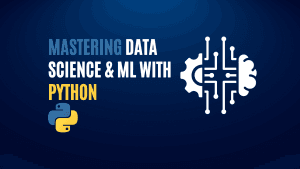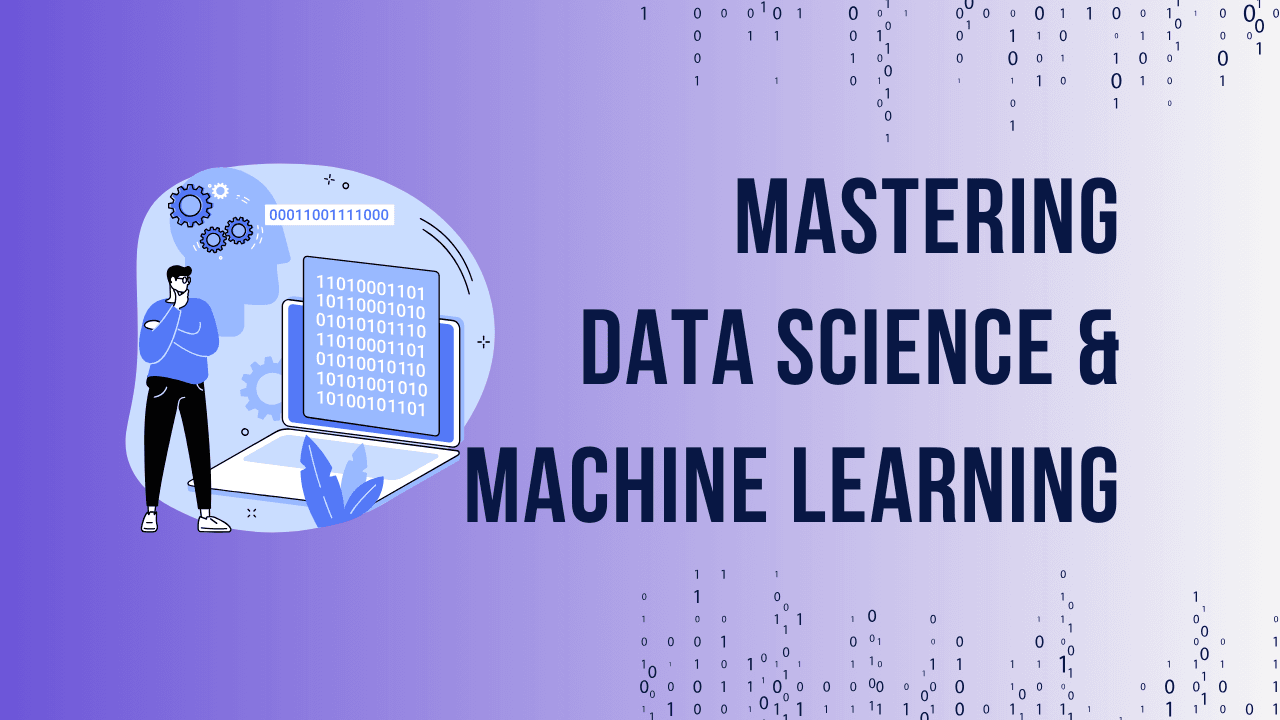1.What is the difference between supervised and unsupervised learning?
Supervised learning involves training a model using labeled data, where the model learns the relationship between input and output. For example, predicting house prices based on features like size and location. In unsupervised learning, there are no labels, and the model finds patterns or structures within the data, such as grouping customers into segments.
2: What is overfitting in machine learning?
Overfitting occurs when a model performs well on training data but fails to generalize to new, unseen data. This happens when the model is too complex, capturing noise instead of the underlying pattern. To prevent overfitting, techniques such as cross-validation, pruning, and regularization can be used.
Ready to take you Data Science and Machine Learning skills to the next level? Check out our comprehensive Mastering Data Science and ML with Python course.
3: Explain the concept of cross-validation
Cross-validation is a technique used to evaluate the performance of a machine learning model. It involves dividing the dataset into multiple subsets, training the model on some subsets, and testing it on the others. This helps ensure that the model performs well on different samples of data, improving its generalizability. Types of cross-validation include k-fold cross-validation and leave-one-out cross-validation.
4: What are precision and recall?
Precision is the ratio of correctly predicted positive observations to the total predicted positives. It answers the question, “Of all the positive predictions made, how many were correct?” Recall (or sensitivity) is the ratio of correctly predicted positive observations to all actual positives. It answers the question, “Of all the actual positive cases, how many did we predict correctly?”
5: What is a confusion matrix?
A confusion matrix is a table that is used to evaluate the performance of a classification algorithm. It shows the true positives, false positives, true negatives, and false negatives, helping you understand how well the model is performing. For example, a confusion matrix can be used to analyze how well a model is classifying spam emails versus non-spam emails.
6: How do you handle missing data in a dataset?
Handling missing data is crucial for accurate data analysis. Common methods include:
- Mean/median imputation: Replacing missing values with the mean or median of the feature.
- Dropping rows: Removing rows with missing values, though this can reduce the dataset size.
- Using algorithms that handle missing data: Certain algorithms, like decision trees, can handle missing values internally.
7: Explain the bias-variance tradeoff
Bias is the error introduced by simplifying assumptions made by the model, while variance refers to the model’s sensitivity to fluctuations in the training data. A model with high bias oversimplifies the data, while a model with high variance overfits it. The tradeoff between bias and variance is a fundamental concept in machine learning. Balancing both is necessary to achieve good predictive performance.
8: What is the difference between Type I and Type II errors?
Type I error (false positive) occurs when the model incorrectly rejects a true null hypothesis. Type II error (false negative) happens when the model fails to reject a false null hypothesis. For example, in medical testing, a Type I error would be diagnosing a healthy person with a disease, while a Type II error would be failing to detect the disease in a sick person.
Ready to take you Data Science and Machine Learning skills to the next level? Check out our comprehensive Mastering Data Science and ML with Python course.
9: Explain the concept of regularization?
Regularization is a technique used to prevent overfitting by adding a penalty to the model’s complexity. Two common types of regularization are:
- L1 regularization (Lasso): It adds the absolute value of coefficients as a penalty term to the loss function, driving some coefficients to zero, thus performing feature selection.
- L2 regularization (Ridge): It adds the square of coefficients as a penalty term, shrinking coefficients but not eliminating them completely.
10: What is Principal Component Analysis (PCA)?
PCA is a dimensionality reduction technique that transforms a dataset into a set of orthogonal components called principal components. It captures the most important variance in the data while reducing the number of features. PCA is commonly used in scenarios where high-dimensional data needs to be visualized or simplified.
11: What is the difference between a histogram and a bar chart?
A histogram represents the distribution of numerical data and groups the data into continuous intervals called bins. It is used to understand the underlying frequency distribution of the data. A bar chart, on the other hand, displays categorical data using rectangular bars, where the height of each bar is proportional to the category’s frequency.
Ready to take you Data Science and Machine Learning skills to the next level? Check out our comprehensive Mastering Data Science and ML with Python course.



